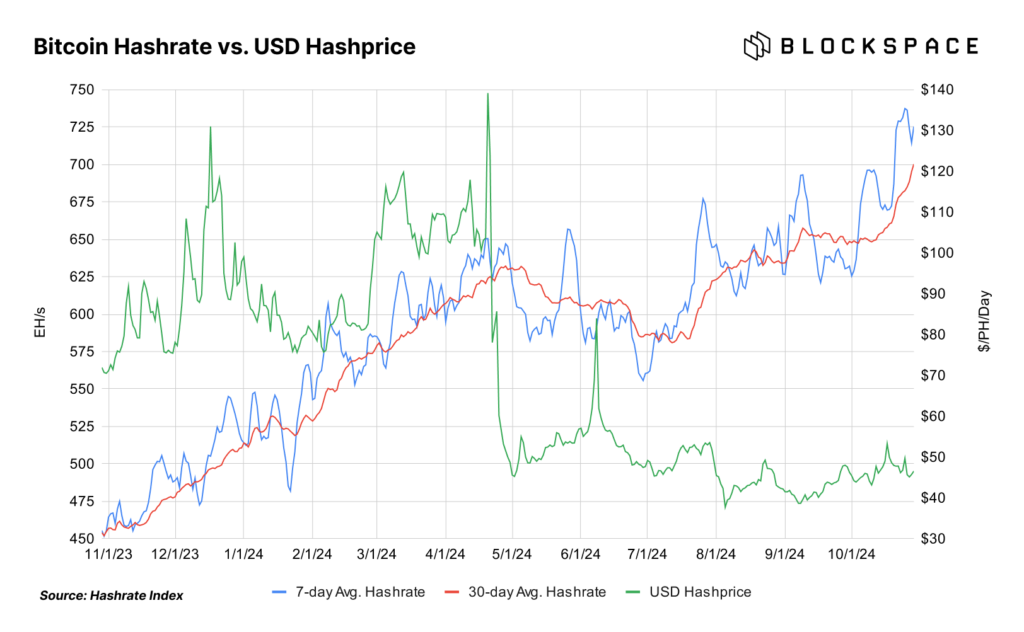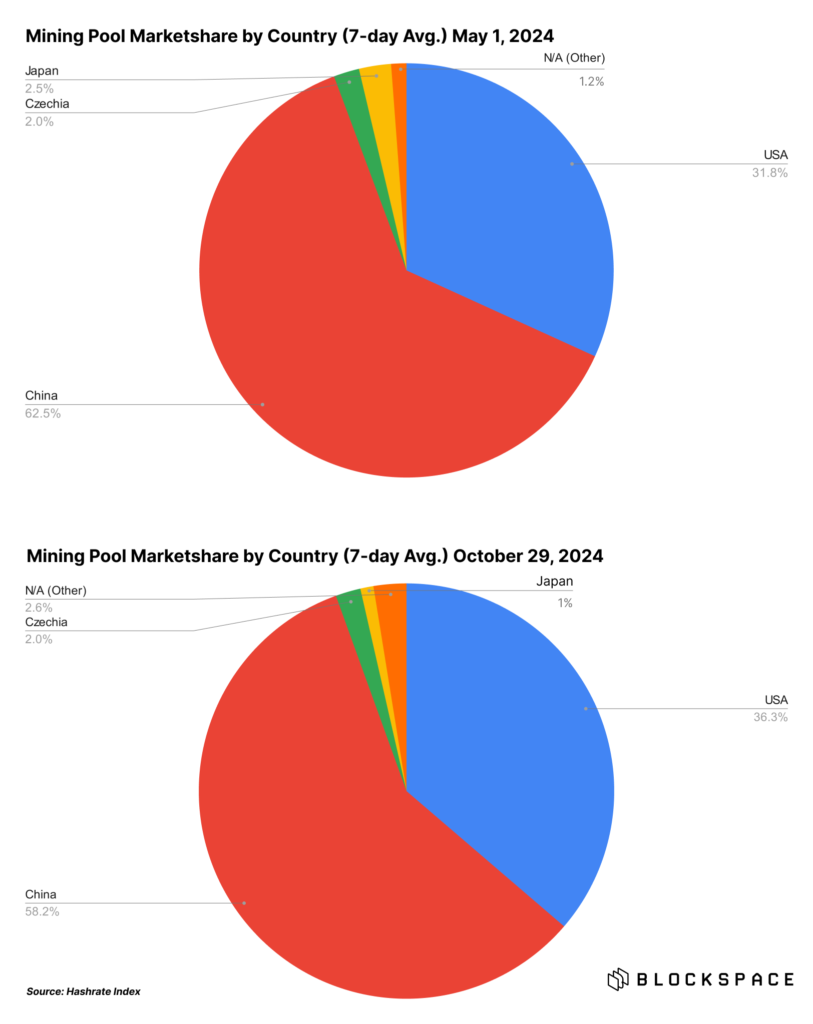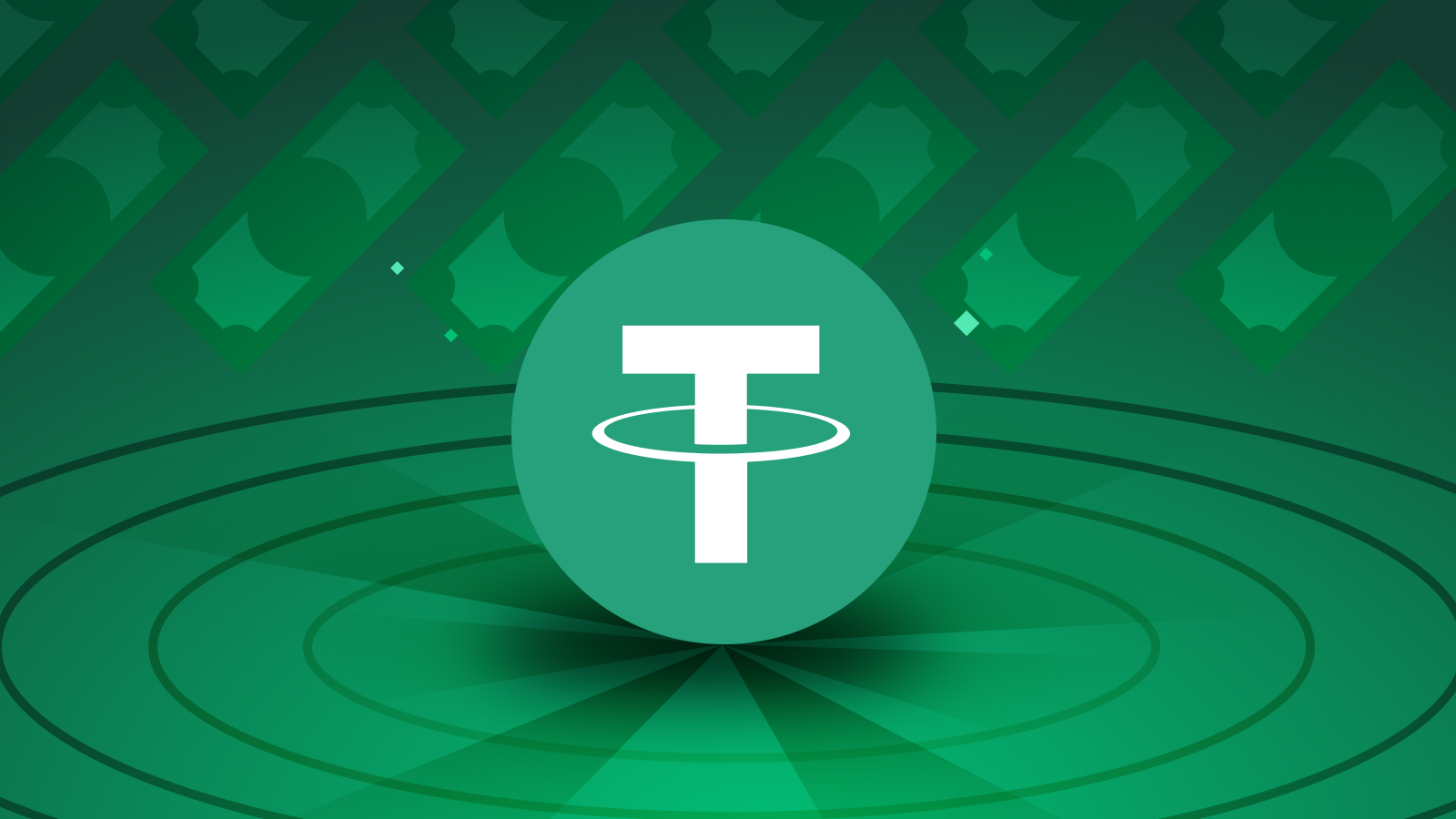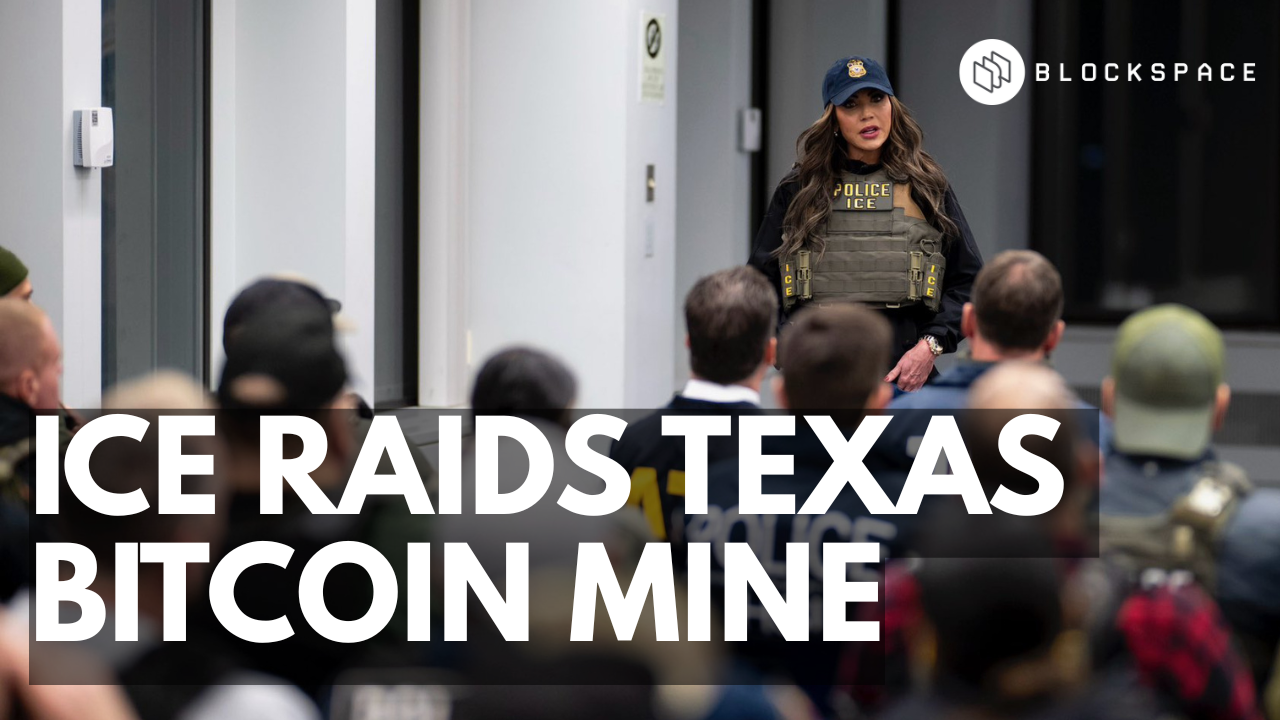Bitcoin’s hashrate hit yet another all-time high last week, topping out at a 7-day average of 741 EH/s on October 25. Since the Fourth Halving on April 20, Bitcoin’s hashrate hit all-time highs in May, July, and September too – and all of this despite an all-time low hashprice environment.

We can attribute the lion’s share of this new hashrate to bitcoin miners in the United States, particularly from public bitcoin miners who are deploying gobs of computing power from next-generation ASICs like the S21 and M60 series.
But that only tells half of the story. To understand why hashrate is surging despite all-time low margins, we also have to look at the mining market in the US’s largest geopolitical rivals: Russia and China.
US bitcoin miners still lead the hashrate arms race
The United States is still the undisputed leader in the global hashrace. A recent J.P. Morgan report estimated that public companies alone operate 29% of Bitcoin’s total hashrate within the US’s borders.
One look at the aggregate hashrate of the top 12 public miners by market capitalization reinforces this finding. From July to September, these miners increased their collective hashrate by 19% from 158 EH/s to 189 EH/s (granted, some of this hashrate is outside the US, but the vast majority coresides in US-based mining sites).

The growth is not only coming from expansion to overall megawatt capacity; it’s also the result of miners replacing older ASIC miners with more powerful next-generation equipment. And it’s safe to say that we can extrapolate this trend out to the private market.
“Based on our client base we believe the majority of growth in hashrate is coming from the United States,” Ethan Vera, the COO of bitcoin mining software and services company Luxor, told Blockspace Media. Looking to the US’s neighbor to the North, which has historically held a significant sum of Bitcoin’s hashrate, he added that “we have seen a large drop in growth in the Canadian market.”
Jaran Mellerud, the co-founder of Hashlabs, a bitcoin mining hosting and services company, corroborated Vera’s view. The S21 series is supplanting the S19 series as the industry standard, he said, and this is likely the largest driver of growth. Additionally, with summer giving way to autumn, miners the world over are curtailing less (and this is particularly true in the US), meaning they are no longer powering down their machines to ameliorate shortfalls in their local grid’s electricity supply.
“Summer curtailment is a well-known feature of mining in Texas and several other US states. With the summer behind us and Texas miners operating at close to full capacity, we naturally see a boost in the global hashrate,” Mellerud said.
He concluded that the next-generation of ASICs, which are more powerful and energy efficient than older models, are giving miners enough financial breathing room to deploy hashrate, and that hosted miners have no choice but to upgrade to these models if they wish to continue operating.
“The network appears to have stomached the halving and miners are back to adding hashrate again,” he said, adding that demand for Hashlabs’s hosting services has increased after a summer lull.
Russia is in second place, and its influence could spill over to other BRICS nations
Perhaps unsurprisingly, bitcoin miners in oil-and-gas-rich Russia are expanding their share of hashrate as well. More surprising, though, is the notion that Chinese bitcoin miners are expanding in defiance of provincial bans around the country.
In the hashrate arms race, “Russia and China [are] closely following the US,” Vera told us, adding that Luxor estimates anywhere from 60-80% of Bitcoin’s hashrate resides in these three nations.
Denis Rusinovich, a partner at bitcoin mining research and advisory firm CMG: Cryptocurrency Mining Group, took this a step further and said that now there is more transparency from Russian miners “for clients, suppliers, and financing counterparties” than ever before. Of the ASIC suppliers he knows who are active in the region, he said that “almost half” of their business comes from miners in Russia.
He posited that, after China’s 2021 bitcoin mining ban, Russia has “always [been] number two” behind the US in total hashrate. Generally, Russia bitcoin miners have been more reticent than their Western counterparts to advertise their businesses or report to researchers about their size. But he said that they are becoming more vocal and open in light of positive regulatory developments in the country, and that markets are paving new avenues of liquidity for Russian miners.
“I expect next year some Russian players will list on local public markets,” he told Blockspace. Sanctions will prevent western investors from investing in these companies, of course, but Rusinovich said that plenty of capital from BRICS coalition countries will be open to these future opportunities. On the subject of BRICS, he pointed to a new initiative from the Russia Direct Investment Fund and BitRiver, which promises to promote bitcoin mining investment and development in BRICS member nations, as a harbinger of things to come.
Investment may be ramping up in Russia, but it may not be allocated toward capacity expansion or new mining sites. Mellerud told Blockapce that Hashlabs co-founder Alen Makhmetov claims “that the Russian market has become saturated and there are no expansion possibilities due to higher power prices and difficulties in obtaining new grid connections,” a problem that has persisted for “several months.”
It’s most likely, according to Mellerud, that next-generation ASIC shipments into Russia are geared toward upgrading existing sites.
Rusinovich said that it’s true that some sites and regions are at capacity and cannot receive additional power allotments, but he said that some sites, mostly industrial-scale ones, are still expanding. He believes that smaller scale and retail operations will be choked out, because it is “mostly illegal [to operate] in residential areas where [prices] are very low.” In the eyes of officials, this is tantamount to stealing electricity, and they blame miners for contributing to grid instability in residential areas.
He concluded that power prices are on the rise in Russia, but that larger miners can compensate for this by participating in curtailment and demand response programs.
China is down – but not out – in global hashrace
Three years removed from China’s sweeping bitcoin mining ban, The Red Dragon is once again stoking its share of Bitcon’s hashrate.
China’s mining ban amounted to multiple provincial edicts that banned both the practice of bitcoin mining and the importation of mining equipment, and it coincided with a federal crackdown of crypto in general in the country.
Vera said that there’s no indication that the Chinese Communist Party (CCP) or provincial governments have reversed their positions, but that Luxor has “heard of expansion of mining farms in certain provinces.” These miners cannot import new equipment into China, but Vera claimed that there are a handful of ASIC miner assembly sites still active in the region.
There’s a linguistic and informational blockade between China and the West that makes it difficult to get clear, accurate information about the actual developments in the nation, so it’s harder to pinpoint just how much bitcoin mining activity is transpring in China currently. The same can be said for Russia to a lesser extent, but there are enough reports to indicate that there is significant activity in each region.
The only proxy we can use to measure how much – mining pool data – is imperfect, but it’s the best gauge we have. All else being equal, Russian miners would have to use Chinese pools, since sanctions bar them from US pools, Czechia-based Braiins Pool, and Japan-based SBI Crypto. Similarly, we expect that Chinese miners will almost always opt for a Chinese mining pool.
But if we look at the market share of US pools versus Chinese pools, for example, we can see that US-based pools have gained market share over Chinese pools in the last six months, suggesting that US miners are still adding more hashrate than their Russian and Chinese competitors.

Emerging markets and other global hashrate trends
Outside of the US, Russia, and China, other bitcoin mining hotspots are expanding as well, but their respective shares of hashrate are paltry compared to the big three.
Africa provides one of the ripest areas for growth, principally in hydro-rich Ethiopia. Vera estimates that the Ethiopian mining market has swelled by ~650 MW (18-22 EH/s) this year; Mellerud corroborated this, estimating that ~600 MW are active in the country representing 3% of global network hashrate. Mellerud added that “we will see a lot more growth in Ethiopia in the coming months, as hundreds of more MWs are being built out and energized.” Looking beyond Ethiopia, Vera estimates that there are roughly 3-6 EH/s split between Nigeria, Angola, Libya, Zambia, and other African countries, a figure that Vera expects to grow with “larger deployments across Nigeria and East Africa next year.”
Contrary to the up-and-coming markets in Africa, officials are stunting mining growth in Paraguay, another nascent mining hub. Vera claims that ANDES, the Paraguayan power authority, has hiked rates for miners this year in a move that has “hamstrung foreign investment in the country and led to a deceleration of growth.” Paraguay’s loss is Argentina’s gain, however, as he also said that the country is accruing a greater share of global hashrate under Javier Milei’s more business friendly government.
Over the current Halving epoch, it will be worth paying attention to how bitcoin mining expansion in Russia, China, Africa, and South America plays out. Growth in these economies could greatly affect the US share of global hashrate, especially as the AI/HPC race revs up and miners begin competing with hyperscalers and the like for electricity allotments.




